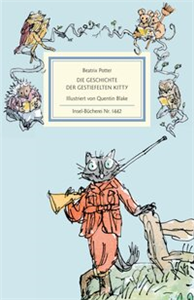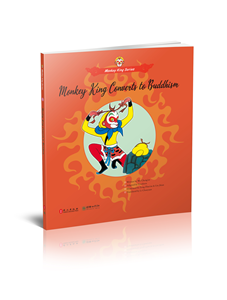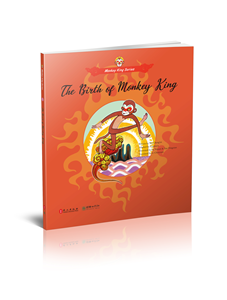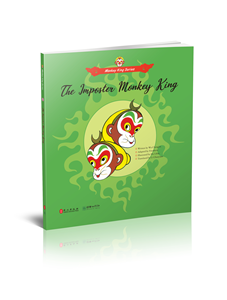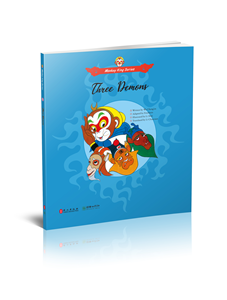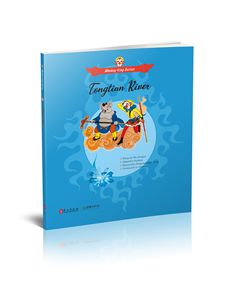Your Search Results
-
Shepherd Press (Click for full list of titles)
Shepherd Press is a publishing company committed to providing God's people with solid biblical books and materials.
View Rights Portal
-
Promoted ContentEconomicsFebruary 1998
Against the Grain
Agri-Environmental Reform In the United States and European Union
by Clive Potter
Agricultural policy has long been regarded as a driving force for rural environmental change in industrial countries. While the causes of recent habitat loss, landscape degradation, soil erosion and water pollution in the EU and US are undoubtedly complex, the most convincing explanations are still ones that are strongly policy driven. By the mid-1980s, environmentalists had come to the conclusion that a major change to farm support in favour of the environment was required if the environmental problems of modern agriculture were to be tackled at source.Against the Grain tells the story of the long campaign for agri-environmental reform which followed. The central argument of this timely book is that in order to appreciate the significance of the reforms themselves, and to predict where they are going, it is necessary to understand why they occurred and how they were accomplished. The book offers a unique comparative analysis of the greening process in the US and EU, connecting policy outcomes to the political battles which produced them. It reflects on what has been achieved in each case and seeks to identify what countries can learn from each other. With its fresh analysis of what promises to be an increasingly central component of rural policy, this book is essential reading for analysts and policy-makers as well as an important text for senior undergraduates and postgraduates in rural geography, agricultural and environmental economics and environmental studies.
-
Promoted ContentBusiness, Economics & LawOctober 2016
Europe's Changing Woods and Forests
From Wildwood to Managed Landscapes
by Tibor Hartel, Keith Kirby, Thomas Ranius, Charles Watkins, Peter Buckley, Peter S Savill, Chris Quine, Matthias Bürgi, John Fletcher, Robert Hearn, Martin Hermy, Diego Moreno, Tomasz Samojlik, George Peterken, Xavier Rochel, Per Angelstam, Jim Latham, Emma Goldberg, Roberta Cevasco, Clive Potter, Juha Siitonen, Robert Fuller
Our understanding of the historical ecology of European forests has been transformed in the last twenty years. Bringing together key findings from across the continent, Europe's Changing Woods and Forests: From Wildwood to Managed Landscapes provides a comprehensive account of recent research and the relevance of historical studies to our current conservation and management of forests. Combining theory with a series of regional case studies, this book shows how different aspects of forestry play out according to the landscape and historical context of the local area, with broad implications for woodland history, policy and management. Beginning with an overview of Europe's woods and forests, the book reviews a variety of management techniques (including wood-pastures, coppicing, close-to-nature forestry and the impact of hunting), describes how plants and animals respond to changes in woodland and forest cover, and includes case histories from around the continent. It concludes with a discussion of how lessons learned from the past can help in the future. This book is both a vital resource and an interesting read for foresters, conservationists, landscape historians, geographers and ecologists. ; This book provides a comprehensive account of the relevance of historical studies to current conservation and management of forests. It combines theory with a series of regional case studies to show how different aspects of forestry play out according to the landscape and historical context of the local area. ; I: ContributorsII: PrefaceIII: AcknowledgementsPART 1: Introduction and Overview1.0: Overview of Europe’s woods and forests1.1: Introduction1.2: The current state and composition of European woods and forests1.2.1: European forests in a global context1.2.2: Variation in forest cover across the continent1.2.3: Variation in forest composition1.3: Forestry policy and cooperation at a European level 01.3.1: Forestry policy1.3.2: Conservation measures1.3.3: Landscape and amenity conservation.1.3.4: Certification as an approach to sustainable forestry management1.3.5: Forest research cooperation across Europe1.4: Conclusion1.5: References2.0: Methods and approaches in the study of woodland history2.1: Introduction2.2: Oral history2.3: Photographs and drawings2.4: Biological indicators2.5: Historical records2.6: Preserved wood and dendrochronology2.7: Lidar and GIS2.8: Applying archaeological insights to ecological issues2.9: Pollen and charcoal analysis2.10: Conclusion2.11: References3.0: The forest landscape before farming3.1: Where to begin?3.2: A cold open continent3.3: Trees spread back after the ice3.3.1: Forming a canopy 53.3.2: The wood beneath the trees3.3.3: Molecular markers for re-colonisation routes.3.4: A holey blanket of trees3.5: The role of large herbivores, particularly bison, wild horse and aurochs3.6: People in the landscape: the trees in retreat3.7: References4.0: Evolution of modern landscapes4.1: Introduction4.2: The emergence of woodland management4.3: Changes in forest extent and distribution4.3.1: Reductions in forest cover4.3.2: Increases as well as decreases4.3.3: Patterns of clearance and survival4.3.4: The ecological consequences of a patchy landscape4.4: Changes in structure and composition through management4.5: Deliberate modification of the tree and shrub composition of forests4.6: Other species gains and losses4.7: Changes to the fire regime4.8: Changes to the forest soil4.9: Forests and atmospheric pollution4.10: Climate change4.11: Conclusion4.12: ReferencesPART 2: The variety of management across European woods and forests5.0: Wood-pastures in Europe5.1: Introduction5.2: Wood-pasture: a multi-purpose system5.3: Historical development of wood-pastures in Europe5.3.1: Forest grazing and pasturing in ancient times5.3.2: Driving the livestock out of the forest (18th-19th centuries)5.3.4: New recognition for wood-pastures?5.4: National inventories of wood-pastures5.5: Wood-pastures as multi-functional landscape elements: past and present5.6: Threats to wood-pastures5.6.1: Management changes5.6.2: Policy mismatch5.6.3: Decline of old, hollowing or dying trees5.6.4: Lack of regeneration5.7: Conclusions5.8: Acknowledgements5.9: References6.0: Coppice silviculture: from the Mesolithic to the 21st century6.1: Introduction6.2: The physiological and evolutionary significance of coppice6.3: Historic development of coppice silviculture6.4: The rise and fall of coppice as an industrial resource6.5: Surviving and neglected coppice in Europe: the extent of the forest estate6.6: Coppice silviculture6.6.1: Cutting methods6.6.2: Time of cutting6.7: Conversion to high forest6.7.1: Coppice versus high forest yields6.8: Reinstating coppice management6.9: Future drivers of change6.10: References7.0: High forest management and the rise of even-aged stands7.1: Introduction7.2: Changing from coppice to high forest systems7.3: The need for new administrative tools7.4: Silvicultural systems7.5: The rise of plantations7.6: Increased use of conifers and introduced species7.7: How forestry is changing7.8: Future high forest and natural forest structures7.9: References8.0: Close-to-nature forestry8.1: Introduction8.2: Roots and pre-requisites8.3: Developments in the 20th century8.4: Ecological implications8.5: Conclusion8.6: References9.0: The impact of hunting on European woodland from medieval to modern9.1: Introduction9.2: Early impacts of hunting9.3: Meat or merit?9.4: Medieval hunting reserves9.5: Early modern hunting parks in Europe9.6: Hunting and the wider landscape9.7: Modern hunting9.7.1: The influence of driven pheasant shoots on British woodland9.7.2: The influence of modern hunting enclosures on Spanish woodland9.8: Conclusion9.9: ReferencesPART 3: How plants and animals have responded to the changing woodland and forest cover.10.0: The flora and fauna of coppice woods: winners and losers of active management or neglect10.1: Introduction10.2: The diversity of coppice10.2.1: Plants10.2.2: Birds10.2.3: Invertebrates10.2.4: Deadwood and associated species10.2.5: Mammals10.3: Impacts of deer browsing on flora and fauna in coppice10.4: Conservation strategies10.5: Short Rotation Coppice10.6: Conclusion10.7: References11.0: The importance of veteran trees for saproxylic insects11.1: Introduction11.2: What are saproxylic species11.3: Veteran trees in past and present landscapes11.4: Important structures and associated species in old trees11.4.1: Microhabitat diversity11.4.2: Tree cavities and their invertebrates11.4.3: Other microhabitats11.5: Effects of environmental factors on the invertebrate fauna11.5.1: Effects of tree characteristics on species assemblages11.5.2: Effects of surrounding landscape on species assemblages11.5.3: Catering for the needs of the adult as well as the larvae11.5.4: Survey methods11.6: Current situation in Europe11.7: How to preserve the specialized saproxylic species?11.7.1: Management for increasing habitat amount and quality11.7.2: Management for securing spatio-temporal continuity11.8: Future prospects11.9: References12.0: The changing fortunes of woodland birds in temperate Europe12.1: Introduction12.2: The birds of the early Holocene12.3: The birds of the wildwood: alternative models of forest dynamics12.3.1: Largely closed forest – ‘closed canopy’ scenario12.3.2: Open mosaic landscape – ‘wood pasture’ scenario12.3.3: Forest-dominated, but more varied – ‘closed but varied’ scenario12.4: Fragmentation of the wildwood12.5: Effects of the historical emergence of management12.6: The age of managed pasture woods and coppice12.7: The shift towards high forest12.8: Woodland birds today12.8.1: Population trends12.8.2: Influences of agriculture12.8.3: Forestry intensification12.8.4: Birds and afforestation12.9: Recent trends12.10: Conclusions12.11: References13.0: Evolution and changes in the understorey of deciduous forests: lagging behind drivers of change13.1: Introduction13.2: Background13.3: What sorts of plants occur in forests?13.4: Comparing ancient and recent forests13.5: Colonization of new forests13.6: Dispersal and recruitment limitation13.7: Changing ancient forests13.7.1: Management effects13.7.2: Effects of environmental changes13.7.3: Effects of grazing13.7.4: Effects of invasive non-native species13.8: Conserving and expanding forests: does it work?13.9: References14.0: Gains and losses in the European mammal fauna14.1: Introduction14.2: Aurochs14.3: The carnivores14.3.1: Wolf14.3.2: Brown bear14.3.3: Lynx14.4: The Beaver14.5: A species that has done too well14.6: The decline and rise of wild boar and deer14.6.1: Wild boar14.6.2: Deer14.7: Conclusion14.8: References15.0: The curious case of the even-aged plantation: wretched, funereal or misunderstood?15.1: Introduction15.2: What is an even-aged plantation?15.3: A brief historical overview of Atlantic spruce forests15.3.1: The dominance of Sitka spruce15.3.2: Breaking up the conifer blanket15.4: Species composition of spruce plantations15.5: Ecological implications of stand dynamics15.5.1: Precursors - the creation of woodland through afforestation (Stage 0)15.5.2: Stand initiation (Stage 1)15.5.3: The impact of stand development – canopy closure and mortality (Stages 2 and 3)15.5.4: Prolonging the rotation and developing multiple storeys (Stage 4)15.5.5: Resetting the woodland through disturbance15.6: Forest design15.7: The landscape setting15.8: Where next?15.9: Conclusions15.10: ReferencesPART 4: A variety of woodland histories.16.0: Historical ecology in modern conservation in Italy16.1: Introduction16.2: Background16.3: The spread of an historical ecological approach in European conservation thinking16.3.1: Forestry versus Woodmanship16.3.2: Woodland or land-bearing-trees16.3.3: The need for an inter-disciplinary approach16.3.4: The role of historical ecology16.4: Integrating Historical and Local Knowledge into Management Strategies16.4.1: An introduction to the case studies16.4.2: Trees and Woodlands Producing Leaf Fodder16.4.3: Trees, woodland and soil fertility16.4.4: The collection of litter16.4.5: Trees invading bogs: an experiment in applied historical ecology16.5: Conclusion16.6: References17.0: Bialowieza Primeval Forest: a 2000-year interplay of environmental and cultural forces in Europe’s best preserved temperate woodland17.1: Introduction17.2: Previous studies17.3: A new palaeo-ecological record for Bialowieza Primeval Forest17.3.1: Methods17.3.2: Results17.4: Archaeological evidence17.5: Archival studies17.5.1: Royal forest of Polish kings17.5.2: Under Russian rule17.5.3: World War I to the present17.5.4: Changes in land use extent and character17.6: Dendro-chronological analyses of fire dynamics17.7: Interplay of natural and cultural forces17.7.1: The Iron Age17.7.2: The Migration Period, mediaeval and early modern times17.7.3: The seventeenth and eighteenth centuries17.7.4: The nineteenth to mid-twentieth centuries17.7.5: The recent decades17.8: The role of large herbivores in shaping BNP17.9: Conclusions17.10: Acknowledgements17.11: References18.0: Woodland history in the British Isles - an interaction of environmental and cultural forces.18.1: Introduction18.2: Outline of British woodland history18.3: Historical stages and processes of change18.4: Regions18.4.1: Pre-Neolithic wildwood18.4.2: Exploited wildwood18.4.3: Traditional woodland management18.4.4: Parks, Forests and wooded commons18.4.5: Improved traditional management18.4.6: Plantations18.4.7: Revival and restoration of native woodland18.5: Some consequences of differences in regional history18.6: References19.0: Forest management and species composition: an historical approach in Lorraine, France19.1: Introduction19.2: The study of forest history in France19.3: Historical forest uses and their consequences on forest management19.4: The making of the technical and legislative framework19.5: The consequences of forestry policies on forest composition in woodlands of Lorraine19.6: The modern forest - conclusion19.7: References20.0: Barriers and bridges for sustainable forest management: the role of landscape history in Swedish Bergslagen20.1: Introduction20.2: The European scale20.3: The regional scale20.4: Bergslagen – an introduction20.5: Forests, forest ownership and land use dynamics20.6: Barriers to sustainability20.6.1: Ecological sustainability20.6.2: Economic sustainability20. 6.3: Social and cultural sustainability20.7: Bridges towards sustainable forest management20.8: Discussion20.8.1: From forest history to history of forest landscapes20.8.2: Landscapes with different histories: using space for time substitution20.9: ReferencesPART 5: Lessons from the past for the future?21.0: The development of forest conservation in Europe21.1: Introduction21.2: Why conserve forests?21.2.1: As a spiritual place21.2.2: As a place for the Chase21.2.3: As a source of raw materials and a barrier against the elements21.2.4: For a new form of communing with the forests21.3: Type and extent of Protected Forest Areas21.4: Selection of protected areas21.5: Developing a European perspective21.6: Forest protection and conservation as part of land-use practice.21.7: Rewilding and forest conservation21.8: From the past to the future21.8.1: Conservation for people?21.8.2: What sorts of woods and forests will be conserved in future?21.9: References22.0: The UK’s Ancient Woodland Inventory and its Use22.1: Introduction22.2: Developing the ancient woodland concept22.3: The creation of the ancient woodland inventory22.4: Developing and using the inventories22.4.1: England: the ‘Red Queen’ dilemma22.4.2: Wales22.4.3: Scotland22.4.4: Northern Ireland22.5: Testing the limits of the English inventories22.5.1: Uncertain evidence22.5.2: What is a wood?22.5.3: How small can an ancient wood be?22.6: Conclusion22.7: References23.0: Tree and forest pests and diseases: learning from the past to prepare for the future23.1: Introduction23.2: Background23.2.1: Dutch Elm Disease, Ramorum blight and Ash Dieback23.3: The Dutch Elm Disease outbreak23.4: ‘Sudden Oak Death’ (ramorum blight) in the UK23.5: A landscape without ash?23.6: The lessons from history23.7: References24.0: Reflections24.1: Introduction24.2: Ways of exploring and understanding woodland histories24.3: Issues for the future historian24.4: From cultural landscapes back to wildwood?24.5: Europe’s woods and forests: the future?
-
 Trusted Partner
Literature & Literary StudiesOctober 2018
Trusted Partner
Literature & Literary StudiesOctober 2018Clive Barker
Dark imaginer
by Sorcha Ní Fhlainn
Clive Barker: Dark imaginer explores the diverse literary, film and visionary creations of the polymathic and influential British artist Clive Barker. In this necessary and timely collection, innovative essays by leading scholars in the fields of literature, film and popular culture explore Barker's contribution to gothic, fantasy and horror studies, interrogating his creative legacy. The volume consists of an extensive introduction and twelve groundbreaking essays that critically reevaluate Barker's oeuvre. These include in-depth analyses of his celebrated and lesser known novels, short stories, theme park designs, screen and comic book adaptations, film direction and production, sketches and book illustrations, as well as responses to his material from critics and fan communities. Clive Barker: Dark imaginer reveals the breadth and depth of Barker's distinctive dark vision, which continues to fascinate and flourish.
-
 Trusted Partner
Trusted Partner
-
 Trusted Partner
FictionFebruary 2025
Trusted Partner
FictionFebruary 2025Dear Algorithm
The Wed Luck Show
by Michael Afenfia
Two sisters living in two different cities, one in Port Harcourt, Nigeria and the other in Saskatoon, Canada have big announcements to make to their parents about marriage and finding love. While the older sister, Mondi appeared unsure of where she stood between convention and what she desired, her younger sister Yola was all set for an extreme adventure that threatened to tear their family apart.
-
 Trusted Partner
August 2024
Trusted Partner
August 2024A Place Beyond the Heart
by Irehobhude O. Iyioha
A Place Beyond the Heart is a collection of short stories exploring issues at the intersection of war and love, terror and (dis)order, as well as identity, gender, and sexuality. The stories capture the lives of people facing personal, societal and transcultural challenges that define, transform, and ultimately create shifts in the way they see and experience the world.
-
 Trusted Partner
Trusted Partner
-
 Trusted Partner
June 2025
Trusted Partner
June 2025White Hearts
by Nnamdi Okose
Two young boys seeking to be initiated into the order of warriors, find their lives upturned when an accident wakes a vengeful goddess. This story, weaved from the oral lore and magic of the Igbo takes the reader on a journey through the lake where mermaids and crocodiles contend for power. And through enchanted kingdoms ruled by mythical spirits. A curse has been unleashed that would cause the destruction of the world. An army of both humans and mythical creatures must be raised to defend the world. Only a white heart can lead this great army.
-
 Trusted Partner
FictionNovember 2021
Trusted Partner
FictionNovember 2021Double Wahala, Double Trouble
by Uchechukwu Peter Umezurike
A woman chops off her finger to demonstrate her fidelity to her lover. A mother loses her mind upon discovering that her husband has left her and their only child. An artist seeks to unravel why his neighbour's face enchants him. A passenger on a bus acts as an emissary of death. Meet some of the characters in Double Wahala Double Trouble, a collection of eleven stories by the award-winning poet, short story writer, children's novelist, and literary scholar. In this stunning collection, Umezurike lures the reader into a journey of the absurd and the grisly to show us men and women struggling to live, desire, love, and thrive against the eddy of troubles in their world.
-
 Trusted Partner
Children's & YANovember 2023
Trusted Partner
Children's & YANovember 2023The Rights of Indigenous Peoples Explained
by Summer Okibe
Hey Child, I am excited to simplify the United Nations Declaration on the Rights of Indigenous Peoples (UNDRIP) for you. You are special and you deserve to know that the Indigenous People around you have rights. You should, at all times, respect and acknowledge their rights.
-
 Trusted Partner
June 2009
Trusted Partner
June 2009Meine Geschichte
Das Journal 1881 bis 1897
by Beatrix Potter, Glen Cavaliero, Eike Schönfeld
Peter Rabbit, der Hasenjunge mit der blauen Jacke, hat seine Schöpferin Beatrix Potter (1866 –1943) weltberühmt gemacht. Die Auflagen und Übersetzungen der Tales of Peter Rabbit sind kaum zu zählen. Bereits als 16jährige führte Beatrix Potter Tagebuch – und zwar in einer Codeschrift. Beginnend mit kindlichsprunghaften Eintragungen, wächst hier vor den Augen des Lesers die weltberühmte Kinderbuchautorin und -zeichnerin heran, eine genaue Beobachterin ihrer Umwelt. So bieten die Aufzeichnungen nicht nur Einblicke in Beatrix Potters Leben, sondern auch ein Stück viktorianischer Geistes- und Kulturgeschichte.
-
 Trusted Partner
October 2017
Trusted Partner
October 2017Die Geschichte der gestiefelten Kitty
by Beatrix Potter, Quentin Blake, Sabine Erbrich
»Es war einmal eine ehrliche, wohlerzogene junge schwarze Katze« … Dass Kitty alles andere als ehrlich und wohlerzogen ist, liegt bei einer Erzählung von Beatrix Potter natürlich auf der Hand. Dass sie ihrem Frauchen, einer liebenswürdigen alten Dame, aber derart hinterlistige Streiche spielt, damit konnte niemand rechnen. Anstatt nämlich brav im Gartenhäuschen zu nächtigen, streunt Kitty in Frack, Pelzstiefeln und mit einer Schrotflinte bewaffnet durch die Wälder und begegnet allerlei fiesen Gestalten wie zwei ungehobelten Frettchen und – zu Kittys großem Entsetzen – schließlich auch dem hundsgemeinen Fuchs Mr. Todd. Zum Glück gibt es da noch ihre Freunde, die Kitty aus dem größten Schlamassel wieder heraushelfen … Eine bisher unveröffentlichte Geschichte von Beatrix Potter - erstmals auf Deutsch Mit Illustrationen des britischen Großmeisters Sir Quentin Blake
-
 Trusted Partner
May 2021
Trusted Partner
May 2021Teardrops on the Weser
by Amatoritsero Ede
A masterful evocation of past wrongs through the lens of a seductively peaceful present. Amatoritsero Ede's meditative voice seduces us into a voyeuristic trance on a German river bank. Until we are suddenly awakened to the realisation that the "teardrops" are not for the Weser but for the burden of history carried all the way to Africa and beyond. A compelling read.
-
Monkey King Series: Monkey King Converts to Buddhism
by Wu Cheng'en(original author); Lu Xinsen, Yan Dingxian(illustration); Huoji Guozi(text)
Monkey King Series is based on the classic stories from the Journey to the West. With Monkey King as the protagonist, it covers the whole stories from birth of the monkey king to receiving the holy scriptures. More than thirty distinguished artists, including Lu Xinsen and Yan Dingxian, drew for the series with more than 2000 illustrations. With the quality illustrations, texts and other designs, it is a classical Chinese literature collection of great value. This is the third title of the series. Sun Wukong’s rebellion ended under the Buddha’s hand, who pinned him beneath Five Elements Mountain for five hundred years. Freed by the monk Xuanzang, Wukong became his disciple but soon clashed with him. With Guanyin’s magic headband, Xuanzang bound the defiant monkey to his side, and together they set out for the West, joined by the Dragon Horse.
-
 Trusted Partner
Humanities & Social SciencesJune 2025
Trusted Partner
Humanities & Social SciencesJune 2025Reassembling the social interior
Historical spaces from contemporary viewpoints
by Helen McCormack, Jennifer Gray, Anne Nellis Richter
At the intersection of heritage, design history and contemporary art, this book offers new perspectives on the way historical interiors are encountered by, and viewed and presented for, present-day audiences. Many studies have highlighted the historical significance and meanings embedded in the landscape, architecture, decoration and objects to be found within houses and homes. But what about the social meanings of these spaces? Central to this book is the idea that in reflecting, remaking and reimagining historical interiors, the contributions of artists, designers and craftspeople should be foregrounded in constructing ideas of authenticity, transparency, and materiality in the making process. The chapters present a range of case studies that reflect upon on how historical interiors are remade and reimagined by looking in and out; at how a reassembling of spaces ought to avoid 'a shrinking definition of the social itself' (Latour, 2005). Surveying a range of interior 'types' from a number of historical periods, the book includes contributions from practitioners, scholars and makers. From digital reconstructions of a seventeenth-century Belgian constcamer to the interior and exterior worlds of specific historical figures, including Charles Rennie Mackintosh and Beatrix Potter, the book considers how these spaces have powerful significance for contemporary audiences, particularly in ways that are relatable to shared experiences of work, leisure, family, community, power and politics. This book will be of interest to scholars of the history of interiors and collections, museology, archaeology, architectural history, art, and design history, as well as curators and caretakers of historical sites, spaces and objects.
-
Monkey King Series: The Birth of Monkey King
by Wu Cheng'en(original author); Lu Xinsen, Yan Dingxian(illustration); Huoji Guozi(text)
Monkey King Series is based on the classic stories from the Journey to the West. With Monkey King as the protagonist, it covers the whole stories from birth of the monkey king to receiving the holy scriptures. More than thirty distinguished artists, including Lu Xinsen and Yan Dingxian, drew for the series with more than 2000 illustrations. With the quality illustrations, texts and other designs, it is a classical Chinese literature collection of great value. This is the first title of the series. A great crash split a boulder on Mount of Flowers and Fruits, and from it leapt a stone monkey. Though his arrival stirred the heavens, the Jade Emperor paid no heed. Proving his courage by passing through a roaring waterfall and discovering the Water Curtain Cave, the monkey was chosen king—the Monkey King. He later studied under Master Bodhi, mastering seventy-two transformations and the somersault cloud, and defeated the Demon King who had seized his mountain.
-
Monkey King Series: The Imposter Monkey King
by Wu Cheng'en(original author); Lu Xinsen, Yan Dingxian(illustration); Huoji Guozi(text)
Monkey King Series is based on the classic stories from the Journey to the West. With Monkey King as the protagonist, it covers the whole stories from birth of the monkey king to receiving the holy scriptures. More than thirty distinguished artists, including Lu Xinsen and Yan Dingxian, drew for the series with more than 2000 illustrations. With the quality illustrations, texts and other designs, it is a classical Chinese literature collection of great value. This is the seventeenth title of the series.
-
Monkey King Series: Three Demons
by Wu Cheng'en(original author); Lu Xinsen, Yan Dingxian(illustration); Huoji Guozi(text)
Monkey King Series is based on the classic stories from the Journey to the West. With Monkey King as the protagonist, it covers the whole stories from birth of the monkey king to receiving the holy scriptures. More than thirty distinguished artists, including Lu Xinsen and Yan Dingxian, drew for the series with more than 2000 illustrations. With the quality illustrations, texts and other designs, it is a classical Chinese literature collection of great value. This is the twelfth title of the series.
-
Monkey King Series: Tongtian River
by Wu Cheng'en(original author); Lu Xinsen, Yan Dingxian(illustration); Huoji Guozi(text)
Monkey King Series is based on the classic stories from the Journey to the West. With Monkey King as the protagonist, it covers the whole stories from birth of the monkey king to receiving the holy scriptures. More than thirty distinguished artists, including Lu Xinsen and Yan Dingxian, drew for the series with more than 2000 illustrations. With the quality illustrations, texts and other designs, it is a classical Chinese literature collection of great value. This is the thirteenth title of the series.
-
Monkey King Series: The Hydra
by Wu Cheng'en(original author); Lu Xinsen, Yan Dingxian(illustration); Huoji Guozi(text)
Monkey King Series is based on the classic stories from the Journey to the West. With Monkey King as the protagonist, it covers the whole stories from birth of the monkey king to receiving the holy scriptures. More than thirty distinguished artists, including Lu Xinsen and Yan Dingxian, drew for the series with more than 2000 illustrations. With the quality illustrations, texts and other designs, it is a classical Chinese literature collection of great value. This is the nineteenth title of the series.


















